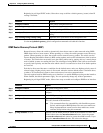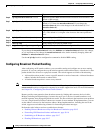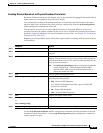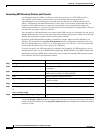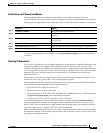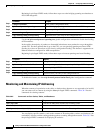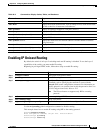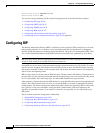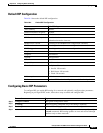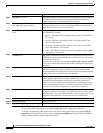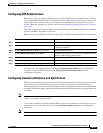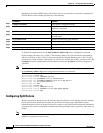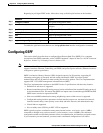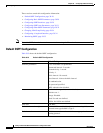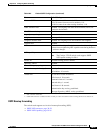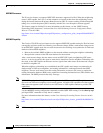
38-21
Catalyst 3750-E and 3560-E Switch Software Configuration Guide
OL-9775-02
Chapter 38 Configuring IP Unicast Routing
Configuring RIP
Default RIP Configuration
Table 38-4 shows the default RIP configuration.
Configuring Basic RIP Parameters
To configure RIP, you enable RIP routing for a network and optionally configure other parameters.
Beginning in privileged EXEC mode, follow these steps to enable and configure RIP:
Table 38-4 Default RIP Configuration
Feature Default Setting
Auto summary Enabled.
Default-information originate Disabled.
Default metric Built-in; automatic metric translations.
IP RIP authentication key-chain No authentication.
Authentication mode: clear text.
IP RIP receive version According to the version router configuration command.
IP RIP send version According to the version router configuration command.
IP RIP triggered According to the version router configuration command.
IP split horizon Varies with media.
Neighbor None defined.
Network None specified.
Offset list Disabled.
Output delay 0 milliseconds.
Timers basic
• Update: 30 seconds.
• Invalid: 180 seconds.
• Hold-down: 180 seconds.
• Flush: 240 seconds.
Validate-update-source Enabled.
Version Receives RIP Version 1 and 2 packets; sends Version 1 packets.
Command Purpose
Step 1
configure terminal Enter global configuration mode.
Step 2
ip routing Enable IP routing. (Required only if IP routing is disabled.)
Step 3
router rip Enable a RIP routing process, and enter router configuration mode.
Step 4
network network number Associate a network with a RIP routing process. You can specify multiple
network commands. RIP routing updates are sent and received through
interfaces only on these networks.



